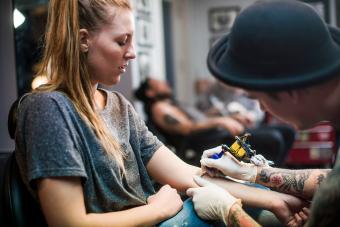
Body piercing looks exotic and fun. It can showcase your individuality and spice up your look. But piercing also comes with long-term side effects that can vary based on where you get your body pierced. Take the time to consider the impact a piercing can have before you head to your nearest shop.
Long-Term Side Effects of Piercing
Piercing takes commitment because not all of the effects show up when you first leave the chair. Some side effects take years to manifest. And, even if you remove your piercing jewelry, the simple act of creating that hole can continue to affect your body in some way. Different areas of your body might be impacted in different ways.
Ears
When you pierce your ear with a normal stud and then remove it, the hole will eventually close. Gauging your ears with anything larger than a standard stud will force your lobes to stretch. If you no longer want the gauge, your ear lobes may shrink a little over time, but you will still be left with a gaping hole.
The Association of Professional Piercers (APP) notes that massage helps break down scarring and promotes circulation of the skin, which can help these holes to shrink. However, in most instances, you would have to talk to a plastic surgeon about surgical and non-surgical procedures available to help restore the appearance of your ear lobes.
Oral Piercings: Tongue, Cheek, and Lip
Although the pain associated with many oral piercings is minimal, oral piercings have long-term risks you'll want to know about. The Open Dentistry Journalprovides information about long-term effects that can include:
- Excess saliva production
- Gum disease from long stem tongue piercings (barbells) that make prolonged contact with the gums
- Jewelry aspiration
- Severe infection
- Speech impairment
- Teeth that are chipped and damaged by the metal stems of piercings hitting them
- Tongue lesion and thickening of frenula
Surface and Other Body Piercings
The risks of long-term problems from the surface and other body piercings are lower, but they still exist. Potential risks listed in a clinical report from The American Academy of Pediatrics (AAP) include:
- Damage to the underlying muscles, blood vessels, or nerves
- Irritation at the piercing site
- Scarring/keloid scarring
- Splitting or tearing of the skin
Intimate Body Piercings
The popularity of intimate body piercings is increasing, but there are some risks associated with these particular piercings that may not occur with piercings to other parts of the body. The Dermatology Online Journal lists several possible long-term complications that may occur.
- Cancer
- Structural damage to tissue
- Urethral obstruction and rupture
Another consideration that is important to note is that some piercings may render condoms ineffective, and this opens the door to a host of potential problems, including sexually transmitted diseases and unplanned pregnancy.
Possible Social Implications
While many people enjoy body piercings as a way to express their individuality, it is important to note that some piercings are not readily accepted in mainstream society. For example, a prominent piercing on the face may inhibit your ability to get a job, or you might be asked to remove it. It is important to consider long-term implications before getting your piercing.
Short-Term Side Effects of Body Piercings
Not all of the effects of a body piercing are long-term. There are several short-term effects that can be damaging to the body, according to APP and AAP.
- A body rash at the location of the piercing
- Allergic reactions to the metal of the jewelry
- Boils or abscesses
- Migration of the jewelry
- Wound site infection caused by bacteria that enter the pierced skin due to unsterilized metal
Tips to Avoid Short- and Long-Term Effects
Piercings open you up to complications, since you are creating a hole in the skin. However, you can mitigate the risks by finding the right piercer and following aftercare instructions, according to APP.
- Only go to a piercer that is board certified and ask to see their licensing. Although some states don't require licensing, many piercing professionals still attend courses and achieve certification.
- Observe your piercing professional at work to ensure they follow sterile procedures, such as wearing gloves and using fresh needles, or at least freshly-sterilized needles.
- Be sure to follow the aftercare procedures given to you by the piercer.
- Take guidance and recommendations from the piercer to heart.
Before committing to a piercing, visit your local piercer and ask to sit in on a procedure, preferably the same piercing you wish to get. Ask the piercer to explain the procedure in detail and ask specifically about any issues your piercer may have seen before and which steps need to be taken to prevent them.
It's also a very good idea to speak with your healthcare provider before getting one of these piercings to find out what they recommend. Going into the procedure fully aware of possible complications is the surest way to ward off any potential negatives before they occur.







